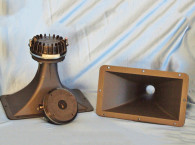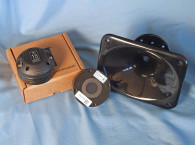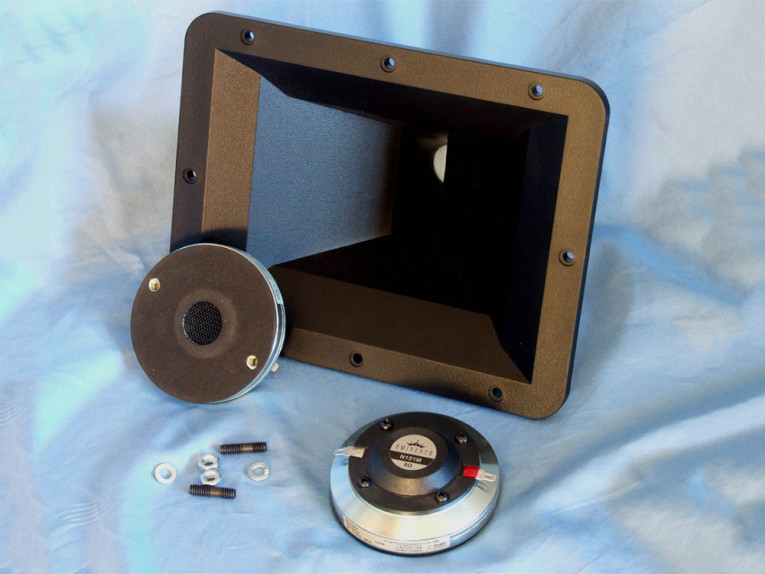

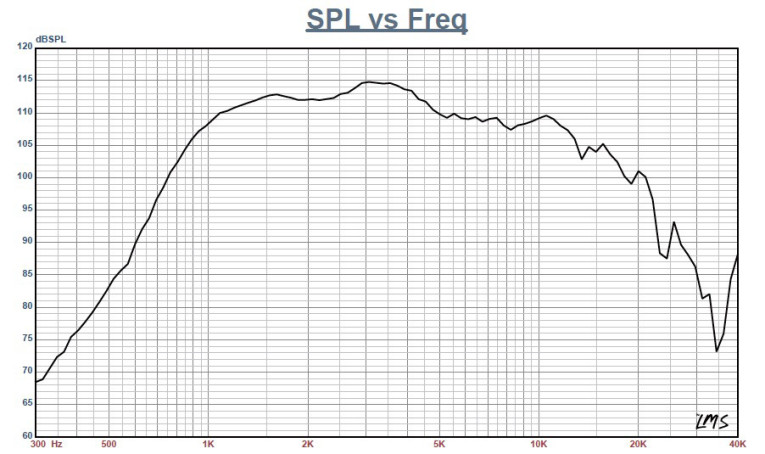
Eminence supplied its new SST1 injection-molded ABS constant directivity horn with the N151M-8 compression driver. The SST1 has a 1” throat and is a 90°H × 40°V pattern horn with a low-frequency limit of 1 kHz. I used the LinearX LMS analyzer to create the 200-point stepped sine wave impedance plot shown in Figure 1, with the solid black curve representing the N151M-8 mounted on the SST1 horn and the dashed blue curve representing the compression driver without the horn. With a 4.03 Ω DCR, the minimum impedance of the N151M-8/SST1 was 4.47 Ω and at 6.13 kHz.
Next, I mounted the N151M-8/SST1 without an enclosure in free air then measured both the horizontal and vertical planes on and off axis at 2.83 V/1 m, using a 100-point gated sine wave sweep. Figure 2 displays the on-axis of the compression driver/horn combination for the N151M-8. The response is approximately ±3.7 dB 1.8 kHz to 12.2 kHz, but like most all constant directivity horns, would require EQ, in this case above 4 kHz.
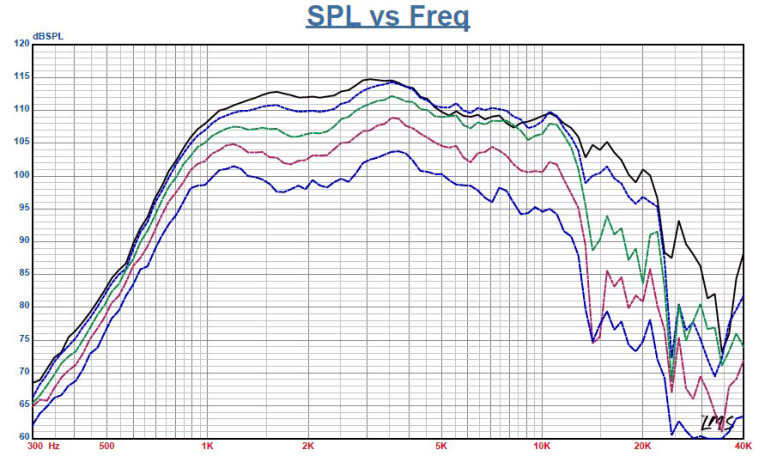


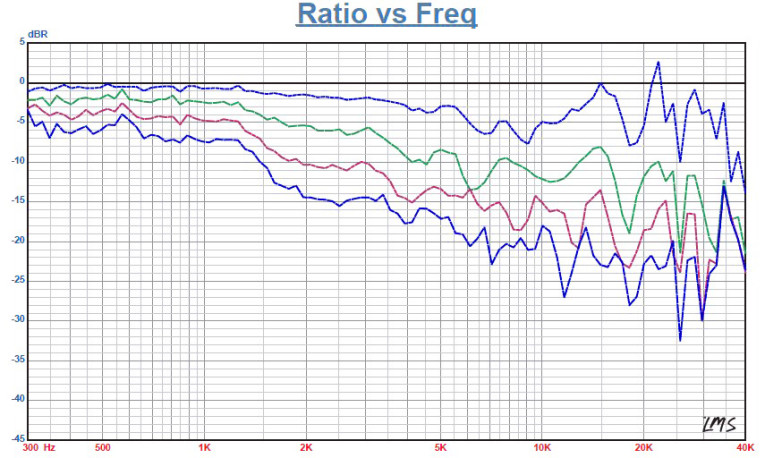

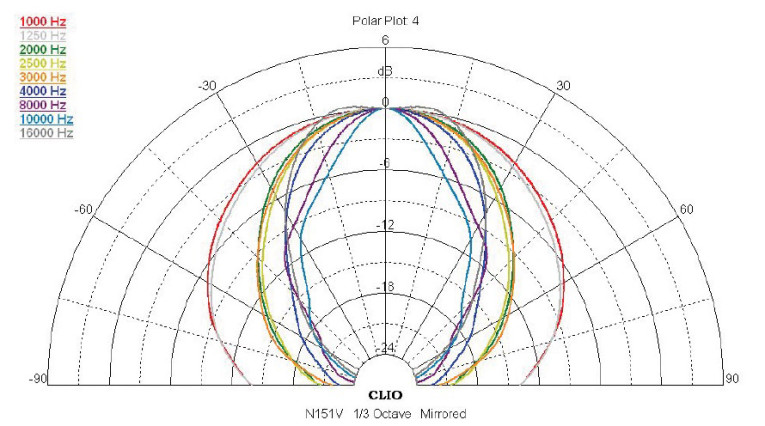
Figure 3 shows the horizontal orientation and Figure 4 shows the vertical orientation. Plots with the off-axis normalized to the on-axis response for the horizontal and vertical axis measurements are given in Figure 5 and Figure 6, with the CLIO Pocket analyzer 180° polar plots (performed with 10° increments) provided in Figure 7 and Figure 8, respectively.
Figure 9 shows the two-sample SPL comparison of the N151M-8/SST1. Both samples appear to be closely matched, within 0.5 to 1 dB. I employed the Listen, Inc. AmpConnect ISC analyzer and 0.25” SCM microphone, using SoundCheck 15 software to measure distortion and generate time frequency plots. For the distortion measurement, I mounted the N151M-8/SST1 combination in free air and set the SPL to 104 dB at 1 m (1.65 V), using a pink noise stimulus. I measured the distortion with the Listen microphone placed 10 cm from the mouth of the horn. This produced the distortion curves shown in Figure 10.
I used SoundCheck to get a 2.83 V/1 m impulse response and imported the data into Listen’s SoundMap Time/Frequency software. Figure 11 shows the resulting cumulative spectral decay (CSD) waterfall plot and Figure 12 shows the Short Time Fourier Transform (STFT) plot.
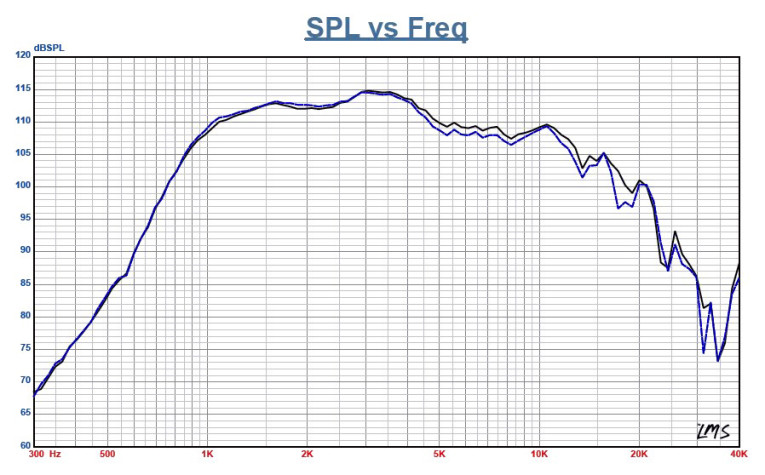
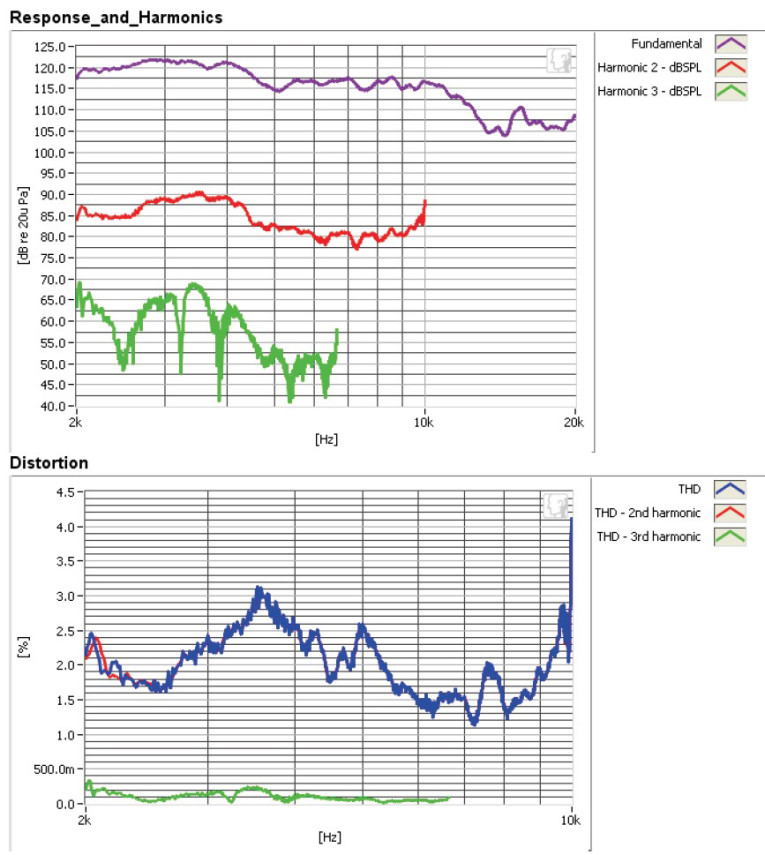
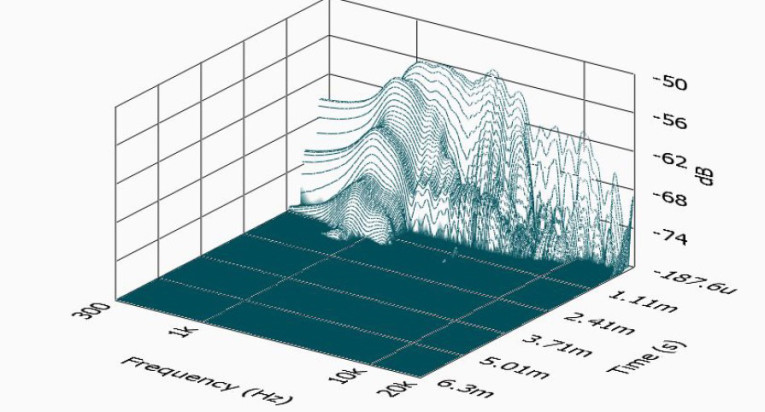

The N151M-8’s output sensitivity is impressive at 111.5 dB in a compact 3.5” diameter compression driver. This represents the usual outstanding Eminence build quality. For information, visit www.eminence.com. VC
This article was originally published in Voice Coil, June 2017.




